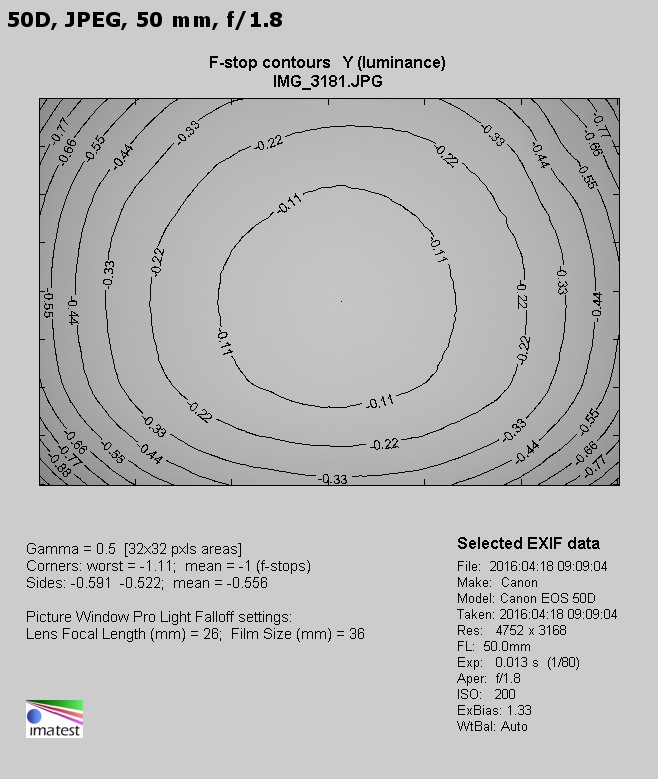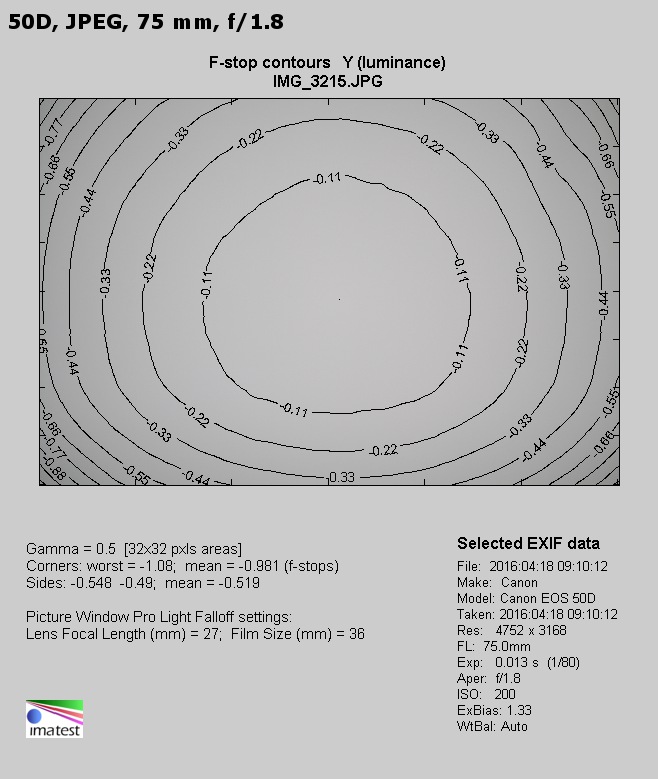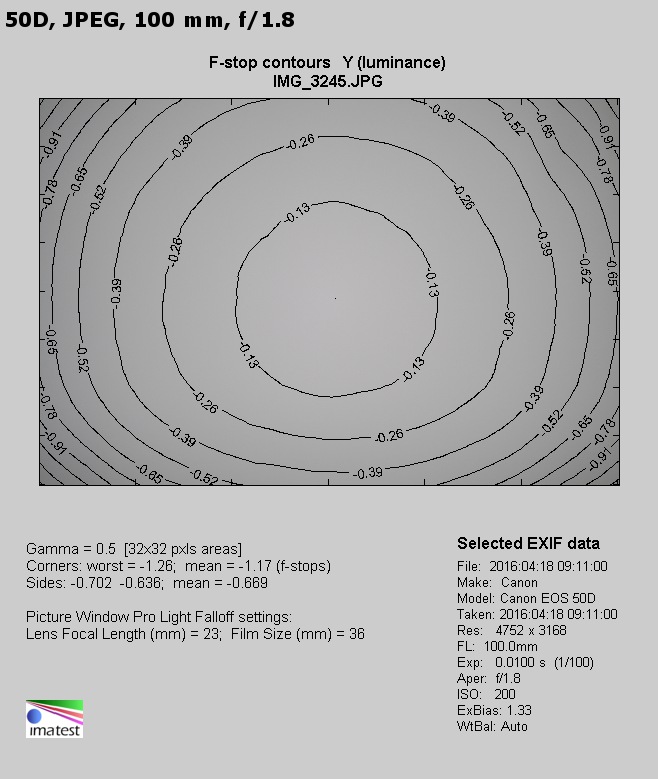Sigma A 50-100 mm f/1.8 DC HSM
8. Vignetting
| Canon 50D, 50 mm, f/1.8 | Canon 50D, 50 mm, f/2.0 |

|

|
| Canon 50D, 75 mm, f/1.8 | Canon 50D, 75 mm, f/2.0 |

|

|
| Canon 50D, 100 mm, f/1.8 | Canon 50D, 100 mm, f/2.0 |

|

|
The results are really sensible and our measurements confirm the impression you get after looking at the photos above. At 50 mm focal length and the maximum relative aperture the light fall-off in the corners is 29% (−1.00 EV); it decreases to 23% (−0.76 EV) by f/2.0. Such results can be called only moderate. By f/2.8 the vignetting disappears almost completely because it amounts to just 9% (−0.26 EV).
Please Support UsIf you enjoy our reviews and articles, and you want us to continue our work please, support our website by donating through PayPal. The funds are going to be used for paying our editorial team, renting servers, and equipping our testing studio; only that way we will be able to continue providing you interesting content for free. |
- - - - - - - - - - - - - - - - - - - - - - - - - - - - - - - - - - - - - - - - - - - - - - - -
In the middle of the focal range the results are pretty much the same: by f/1.8 the aberration is on a level of 29% (−0.98 EV), and by f/2.0 it decreases to 22% (−0.73 EV). Once again all problems disappears after applying f/2.8, because then the vignetting gets down to 8% (−0.25 EV).
The biggest chances to notice any traces of vignetting are at the maximum focal length where, by f/1.8, we measured its level as 33% (−1.17 EV). On slight stopping down to f/2.0 that aberration is 25% (−0.83 EV) and once again the vignetting becomes practically imperceptible by f/2.8 where this time amounting to just 10% (−0.30 EV).
For a zoom lens as fast as f/1.8 the vignetting level of about 1.0 EV is definitely a good result. It’s worth noticing that it is not much higher than the results of different full frame “primes” cooperating with small APS-C sensors. After all the vignetting of the Canon EF 85 mm f/1.8 USM by f/1.8 was approaching 0.8 EV, and the vignetting of the Canon EF 50 mm f/1.8 STM could reach −0.72 EV.
 |
 |
 |
Good vignetting results on the APS-C sensor encouraged us to check how the Sigma would deal on full frame. Let’s glance at thumbnails below.
| Canon 5D III, 50 mm, f/1.8 | Canon 5D III, 50 mm, f/8.0 |

|

|
| Canon 5D III, 75 mm, f/1.8 | Canon 5D III, 75 mm, f/8.0 |

|

|
| Canon 5D III, 100 mm, f/1.8 | Canon 5D III, 100 mm, f/8.0 |

|

|
For those who, contrary to the recommendations of the producer, would like to attach the Sigma 50-100 mm to a full frame camera the news are not good. At the shortest focal length and in the center of the range the image circle is smaller than full frame and the corners remain completely dark, no matter what aperture you employ. The situation changes only at 100 mm but even there at the maximum relative aperture the vignetting reaches 6 EV so you lose almost 90% of light in the corners. Only after stopping down the aperture to f/5.6-8.0 the vignetting level becomes a bit more normal; in this case it means a level over 2 EV so losses of more than 50% of light.
As you see attaching the Sigma to a full frame camera is not exactly a good idea. Still the shape of the vignetting indicates that the lens would cooperate nicely with older EOS-1 series Canon cameras equipped with the APS-H sensor.






